 With nothing more than my superhuman will I'm going to transform this primitive land into... zzzzzzzzz. 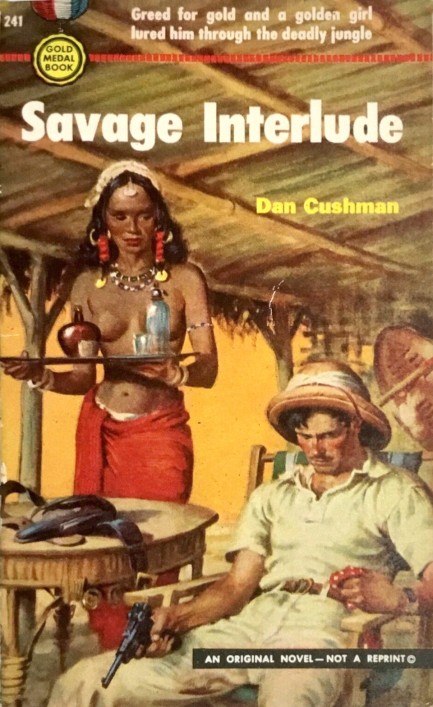
We've had two go-rounds with Dan Cushman, and he's an enjoyable author, but we decided we didn't need three engagements with him, so we didn't buy this copy of his 1952 thriller Savage Interlude. Like many others who worked this premise, Cushman's central theme was often: great men in the tropics laid low by heat, women, liquor, illness, and inscrutable natives. His work has the usual flaws of colonial centered fiction from the era, however in his favor, he knew the far flung realms of which he wrote better than most, and he was sometimes quite funny. But we've read enough to last us for a while. Want to know more about Cushman? Check here, then here.
 Cushman's ideas about Indonesia make for an uneven mix. 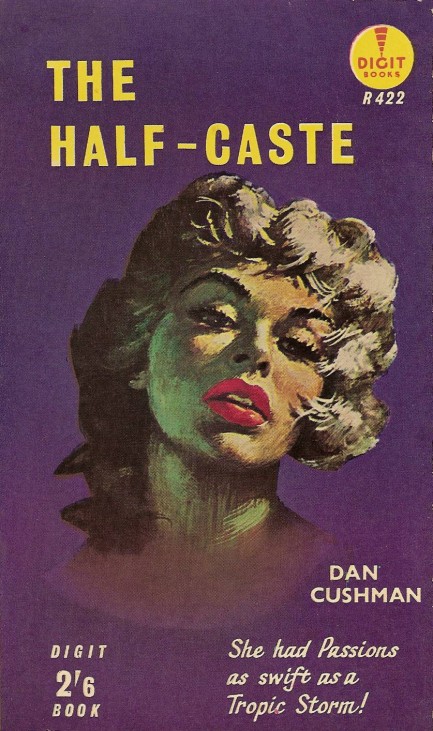
Above is a nice piece of George Ziel art we found on Flickr for Dan Cushman's The Half-Caste, a book we discussed not long ago. The character referred to by the title is a white woman with a Pacific Islander admixture that only a few can discern, but those who do discern it like the way it looks. Thus, even though The Half-Caste has a title that suggests a tale with sociological musings, it's nothing of the sort. It's an Indonesian island adventure of the usual type, and one that could be better. But Ziel's purple art is cool.
 Part of me really loves nature and solitude. But then part of me wants a frappuccino and a cheese danish. 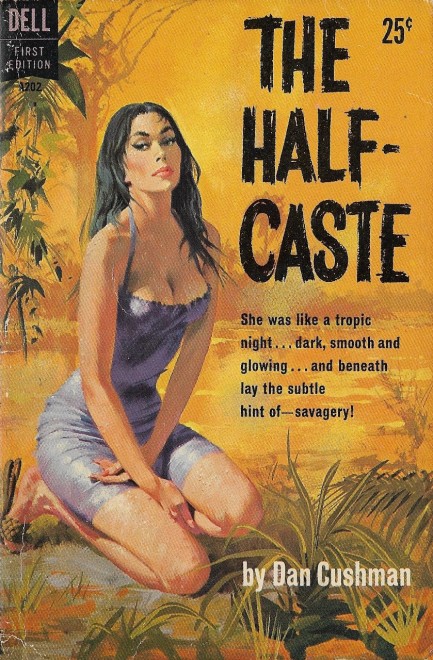
Frisco Dougherty is back, and as impressed with himself as ever, if we judge by how many times he refers to himself in the third person. Last seen in 1951's Jewel of the Java Sea, he's still knocking around Indonesia in 1960's The Half-Caste, eternally seeking the big score that will earn him enough money to escape the tropics for San Francisco. His newest chance comes in the form of a trio of Americans who have arrived in Java to repatriate the bones of an anthropologist who died in the jungle. Dougherty suspects the coffin they plan to recover contains not a body, but a treasure, and formulates a complicated plan to steal whatever is inside. He follows the group into deepest Borneo, funded by the Wuch'ang crime cartel, who he also plans to betray.
There are two main positives to The Half-Caste. First, the exotic setting mixed with deep background concerning the Dutch East Indies evolving into an indepedent Indonesia influenced by a rising China is interesting; and second, the contents of the coffin are a clever surprise. Overall, though, we considered the book an unworthy sequel to Jewel of the Java Sea. Dougherty always verged on caricature, but now he's fully up that river. While still calculating, bigoted, chauvinistic, and pervy, he's bereft of charm, which used to be his saving grace. We suspect Cushman wanted to show how the tropics had decayed Dougherty's psyche since the first book, but he comes across too unsympathetic. It feels as if Cushman returned to the character unwillingly.
As for the half-caste of the title—Annalee, aka Sangra Brueger—she's one of the trio of coffin seekers, but because Dougherty spends nearly the entire book tracking the group from afar, she's barely in the narrative physically until the last forty pages. Dell Publications used Annalee's meager presence, with an assist from Robert McGinnis cover art, to lure readers, but it's a slight misrepresentation. The book is basically all Dougherty, along with his two male partners. During the era of good girl art there were nearly always women on paperback covers, no matter how flimsy the rationale, so you have to expect this sort of thing. We can't really complain, because certainly, the art is brilliant. We're happy to have it.
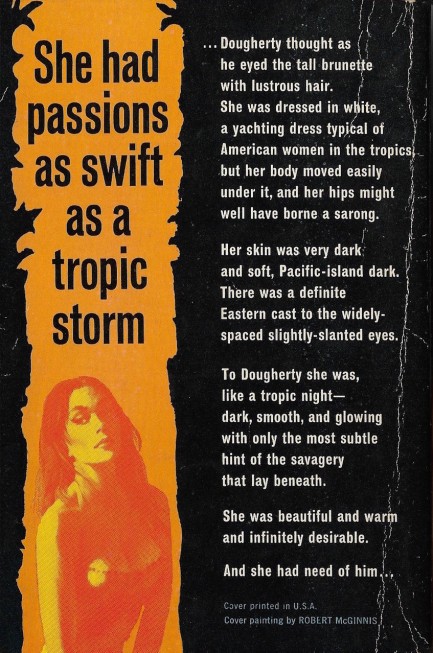
 Zumba, huh? Never heard of it. But anything that involves dancing around in this heat I'll take a pass on. 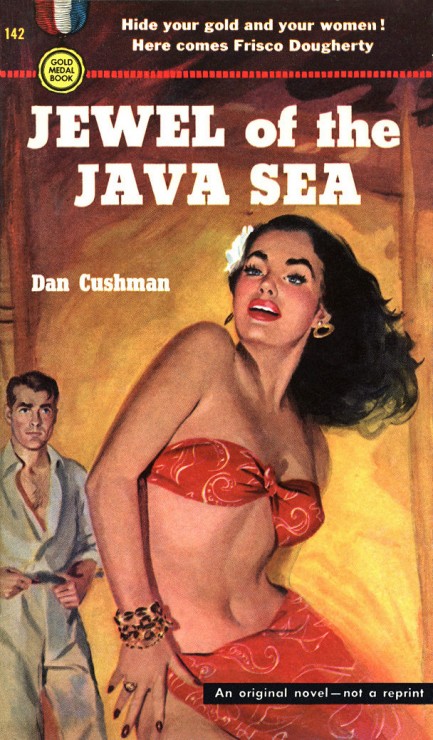
A glance at this Barye Phillips cover for Dan Cushman's 1951 novel Jewel of the Java Sea and you immediately expect it to be filled with lyrical old place names, with their romantic connotations for Westerners of a certain age—Siam, Burma, Celebes, Dutch East Indies, and broadly “the Orient,” names that have dissipated into history, though colonial memory continues to associate them with riches, adventure, and freedom. The name Java is still in use, and that's where Frisco Dougherty, a musician by training, but a fortune hunter and brawler in practice, has been knocking around for fifteen years attempting to make his fortune.
Dougherty has had little luck at this, which is why when he comes into possession of a yellow diamond said to be part of a priceless larger set, he goes into treasure hunter mode with sharp tongue, clenched fists, and hot lead. This jewel he's stumbled upon is supposedly one of five known collectively as the Taj Nipa, with those in turn married to a larger diamond called the Taj-i-nur. The whole kit and caboodle is presumed to reside in the vault of the Maharajah Sir Jagadipendra Bahadur, G.S., C.I., C.C.E.I., LMNOP. But that presumption could be wrong. Maybe the stones were liberated from their vault, though nobody has reported a theft.
Such capers are the core of these types of books, but there are also women. Anna, a Dutchwoman cast adrift in the islands, tells Dougherty she's searching for her missing father, an army major. She's important, but Dougherty is particularly intrigued by Locheng, an exotic dancer in the town of Pontianak, Borneo, and to his eye, a mix of all things good about Asia. He tells the reader she's, “Indo-Chinese, Malay, child of the melting pot, and [with] white blood, enough white blood make her vivid, give her fire.” Uh huh, Frisco loves him some Locheng, though he has a mighty brusque way of showing it:
He decided not to knock. He swung the door open. She sprang up to face him. She was naked. He took a deep breath and looked at her. She seized her sarong and swung it around her hips, tucked it tightly around her waist. Her breasts remained bare, after the fashion of native women.
“Why did you do that?” he asked. “Is it the Western influence that makes you think a body should be hidden? Let me see you as you were. You are so beautiful.”
The Western influence. We didn't notice him wandering around naked to demonstrate his liberation. But maybe that's his point—he's too corrupted to be free, but luckily—his luck, not hers—she isn't. At this point he's met Locheng exactly once before, and she called him a hodah orang—ugly man, according to the book, though not according to Google translate—and showed him the door. But he clearly thinks being cursed out was just a flirtatious prelude to his inevitable conquest of Locheng, and indeed, as these South Seas novels are usually male literary fantasies, that conquest will come soon enough.
Dougherty is interesting. He's impulsive and self-entitled; bigoted, though this appears to be more class than skin based; and sexist, to which we add no qualifiers considering he always wants women to parade around naked. But he's also sentimental and defends the underdog. We think he's an accurate depiction of a certain type of wayfaring American male endemic to the wilder reaches of the world. As former inhabitants of a couple of those reaches ourselves, we've met the type. Cue the Pulp Intl. girlfriends: “Met? You are the type.” Well, not really, though. We've always sought adventures, but our resemblance to Dougherty stops where he demands unearned respect, crosses lines of consent, and calls grown men, “boy.”
In the end, Jewel of the Java Sea is a South Asian thriller that sits neither at the top nor bottom of the genre. Frisco Dougherty might be worth having a beer with, but only until he says something offensive and refuses to apologize. What we'd prefer to hear from him are reflections about something other than how Western influence has ruined his chances to enjoy boobs al fresco. That may yet happen. Reading the book, we got the feeling he was supposed to become a franchise. A series never took root, but he did pop up in one sequel, 1960's The Half-Caste, also set in Asia. We already purchased it a little earlier today, because Cushman can write. What will be interesting is to see if Dougherty can grow.
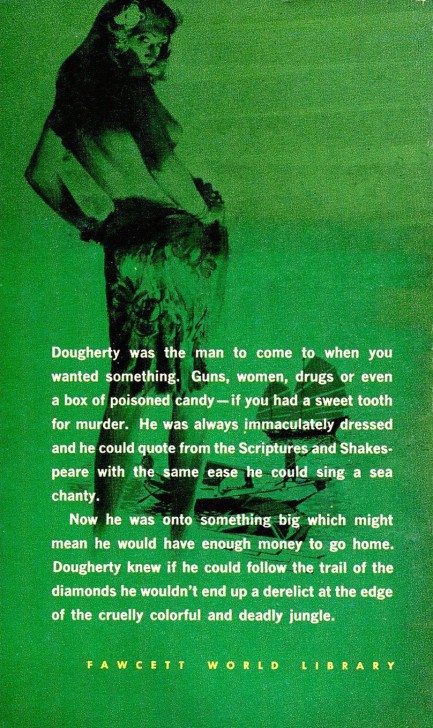
 Have you ever considered the possibility that it's just a penis substitute offering psycho orgasmic relief for self esteem inadequacies? 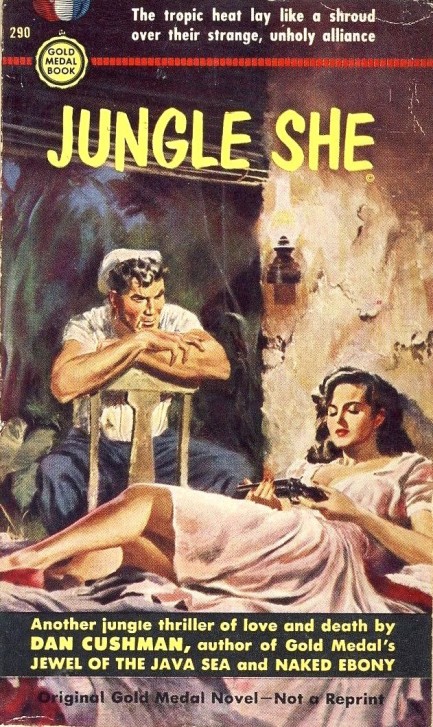
Leave it to a woman to overcomplicate things. Sometimes a gun is just a plain old penis substitute. Dan Cushman's 1953 novel Jungle She features plenty of those, as his franchise man's-man Frisco Dougherty helps an escaped “half caste” damsel in distress return to the locale of her captivity on a Borneo plantation to try and steal the tyrannical owner Van Hoog's hidden fortune. That's supposed to be her in John Floherty, Jr.'s cover art, and if you're thinking to yourself she looks inclined to use the gun on Frisco, well—spoiler alert—she actually does shoot him, but he survives to confront Van Hoog in a vertiginous rope bridge climax. If you want to buy any of Cushman's jungle adventures you'll probably find them expensive—up to $100 for this one. But be patient. We also saw it for eight bucks.
 Vintage paperback violence gets up close and personal. 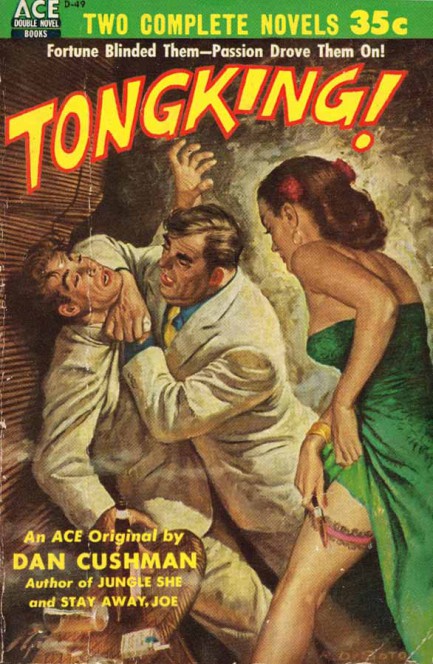
We have another collection today as we prepare to jet away on vacation with the girls. Since the place we’re going is known for rowdy British tourists (what place isn’t known for that?), we thought we’d feature some of the numerous paperback covers featuring fights. You’ll notice, as with our last collection, the preponderance of French books. Parisian publishers loved this theme. The difference, as opposed to American publishers, is that you almost never saw women actually being hit on French covers (we’d almost go so far as to say it never happened, but we’ve obviously not seen every French paperback ever printed). The French preferred man-on-man violence, and when women were involved, they were either acquitting themselves nicely, or often winning via the use of sharp or blunt instruments. Violence against women is and has always been a serious problem in the real world, but we’re just looking at products of the imagination here, which themselves represent products of the imagination known as fiction. Content-wise, mid-century authors generally frowned upon violence toward women even if they wrote it into their novels. Conversely, the cover art, stripped of literary context, seemed to glorify it. Since cover art is designed to entice readers, there’s a valid discussion here about why anti-woman violence was deemed attractive on mid-century paperback fronts, and whether its disappearance indicates an understanding of its wrongness, or merely a cynical realization that it can no longer be shown without consequences. We have another fighting cover here, and you may also want to check out our western brawls here.
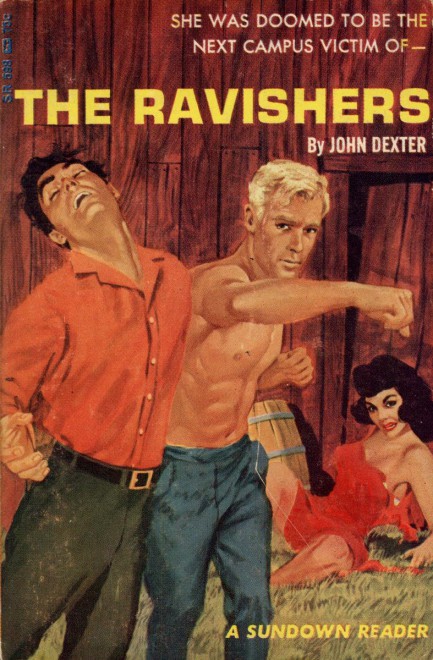 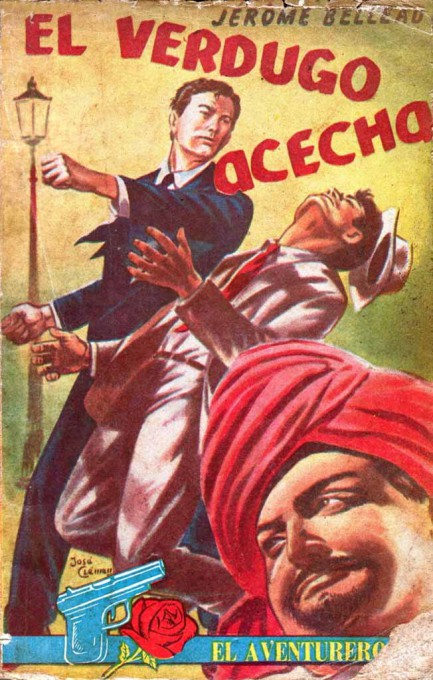 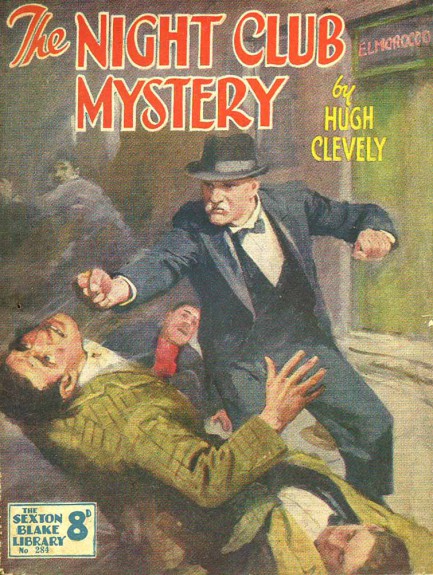 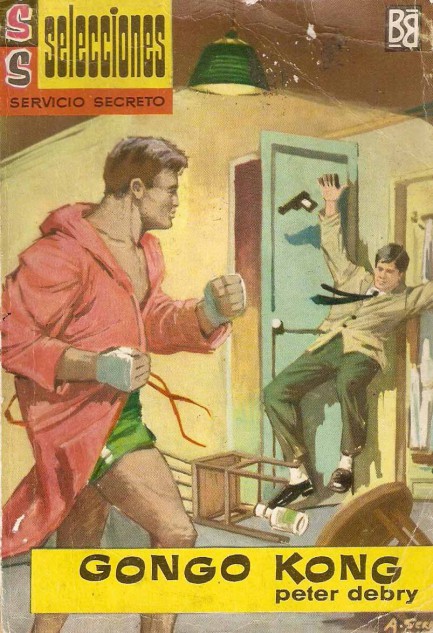 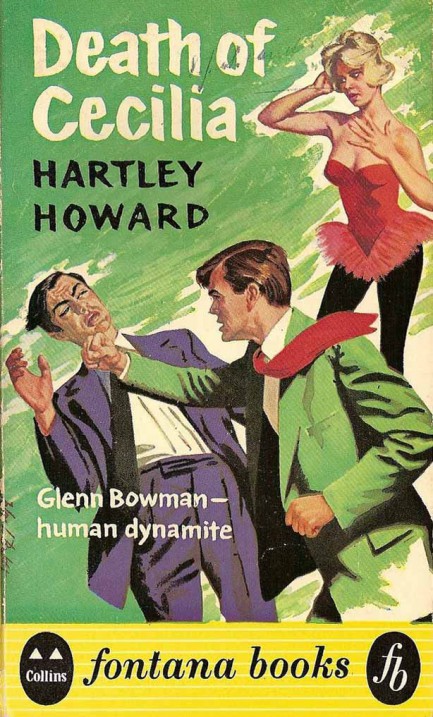 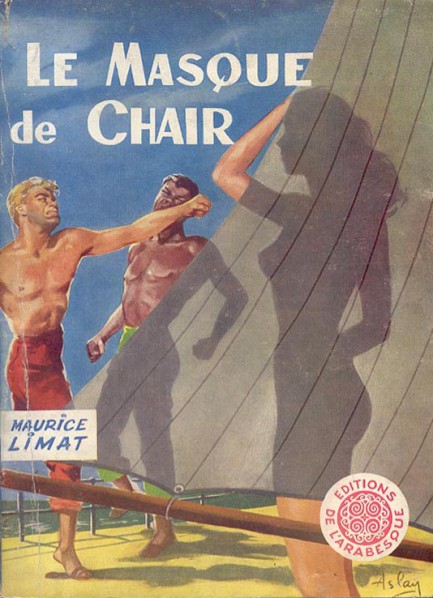 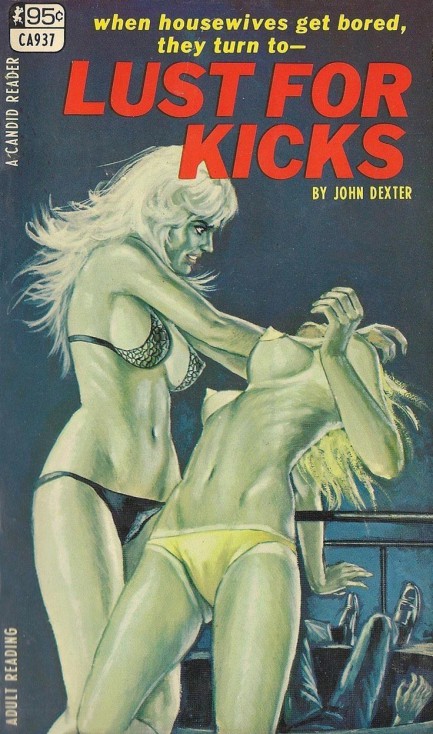 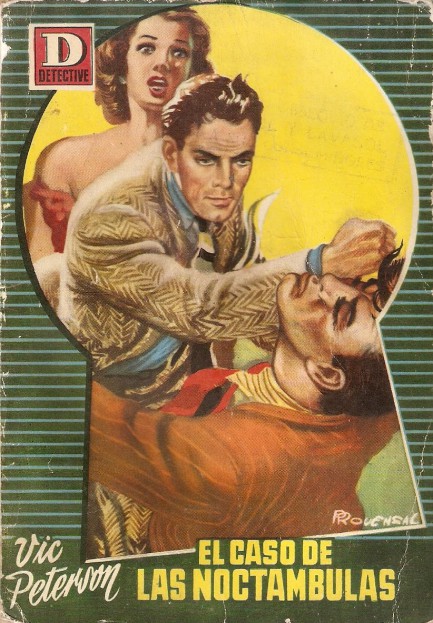 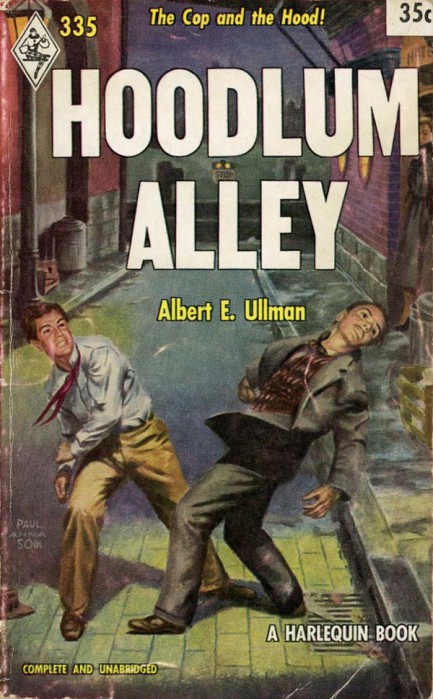 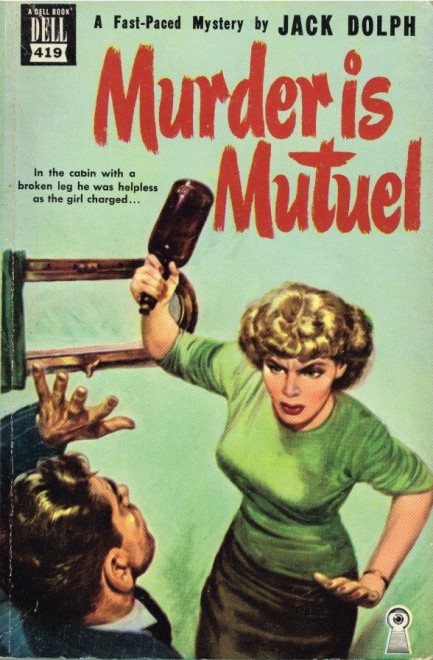 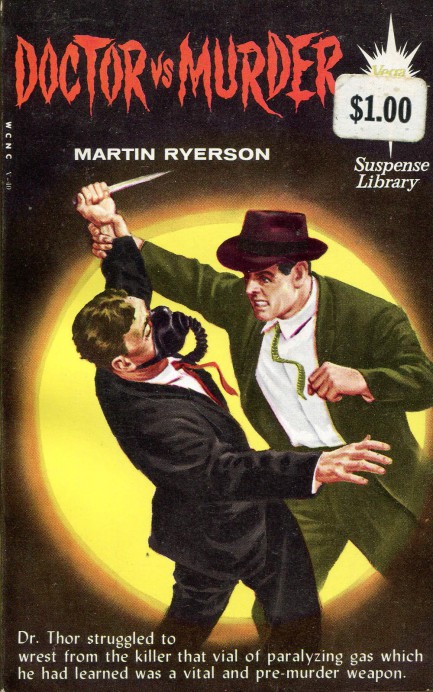 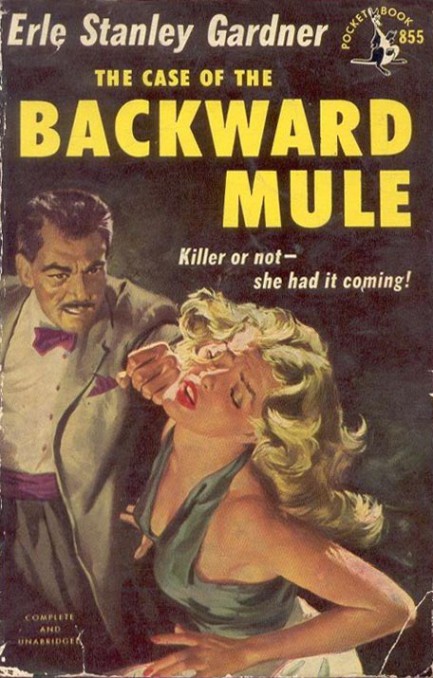 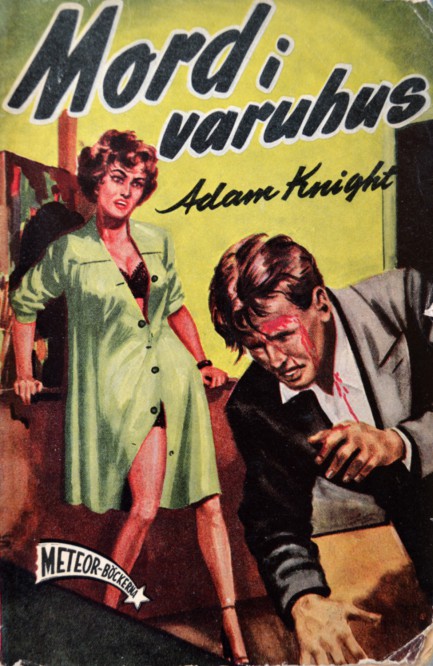 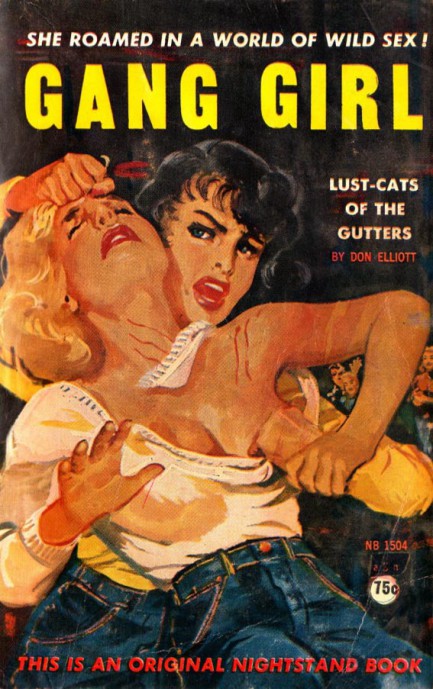 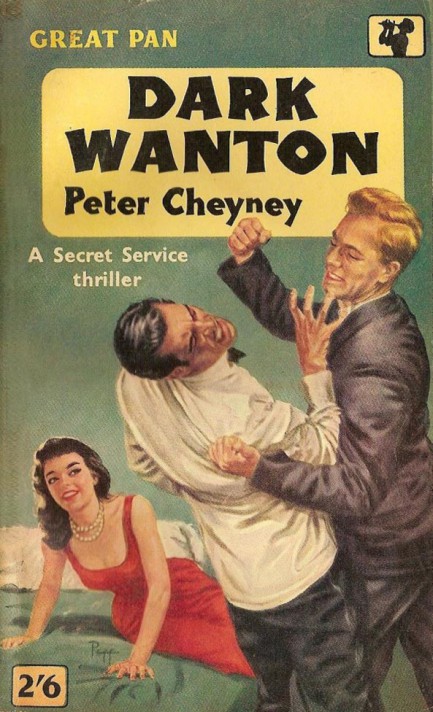 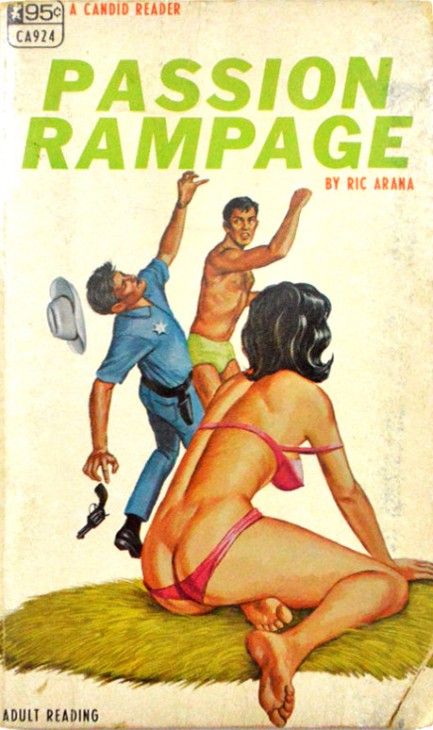 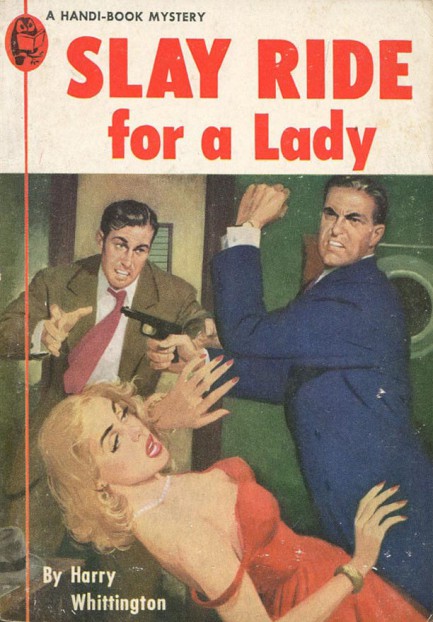 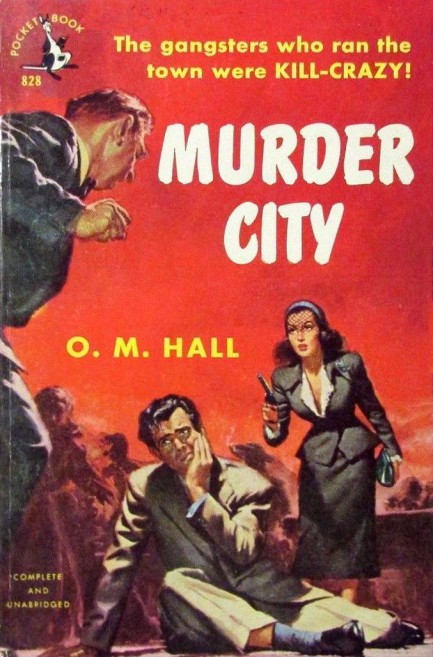 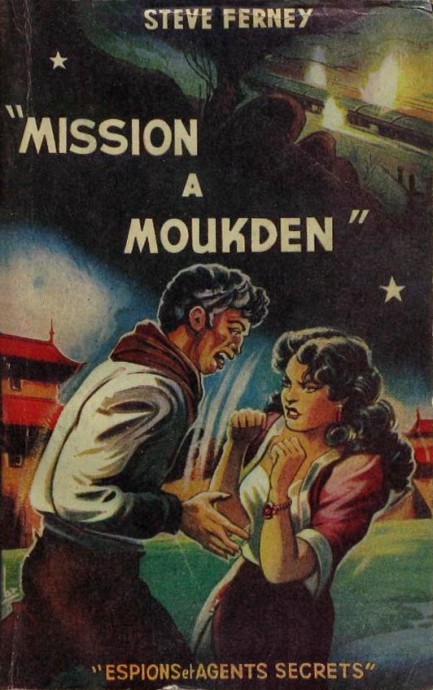 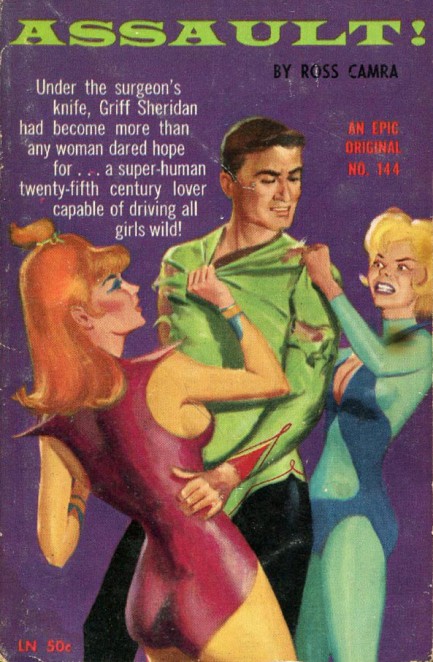 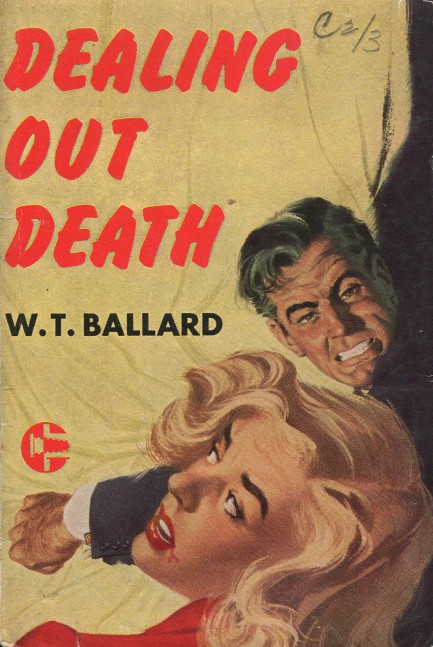  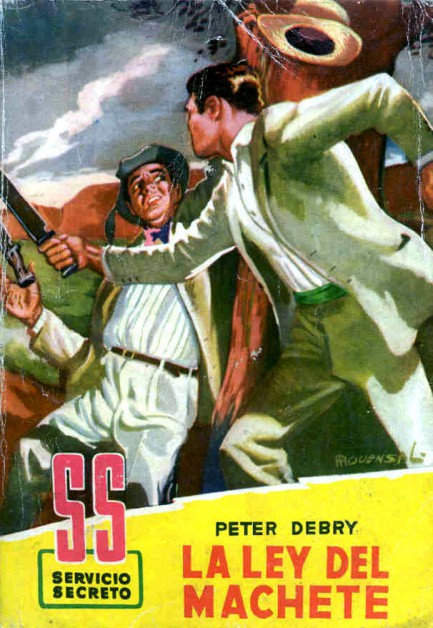 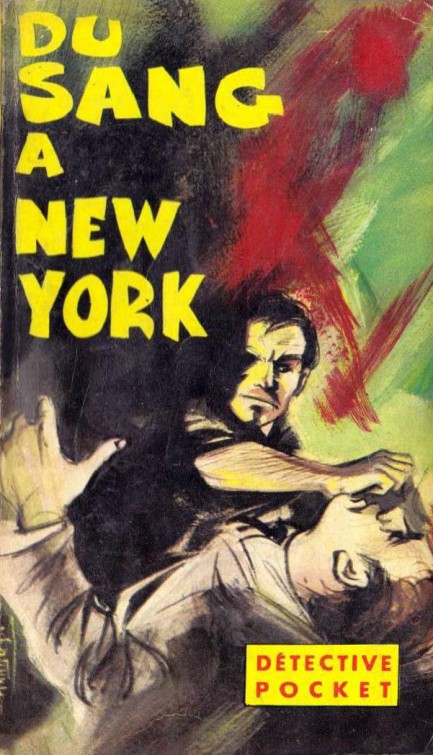  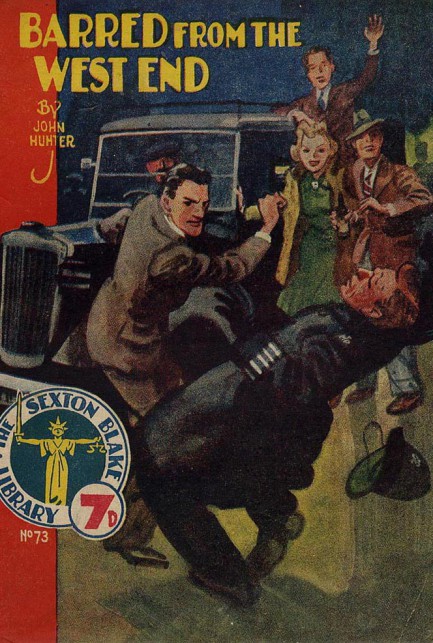 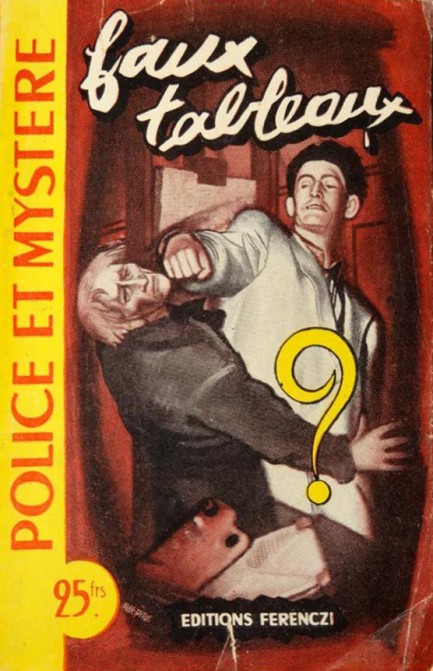 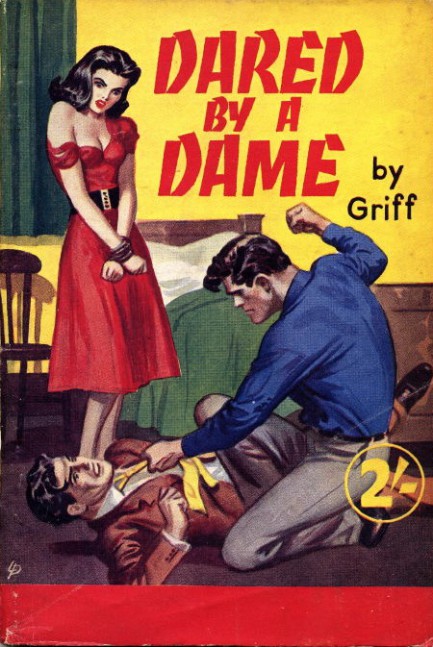 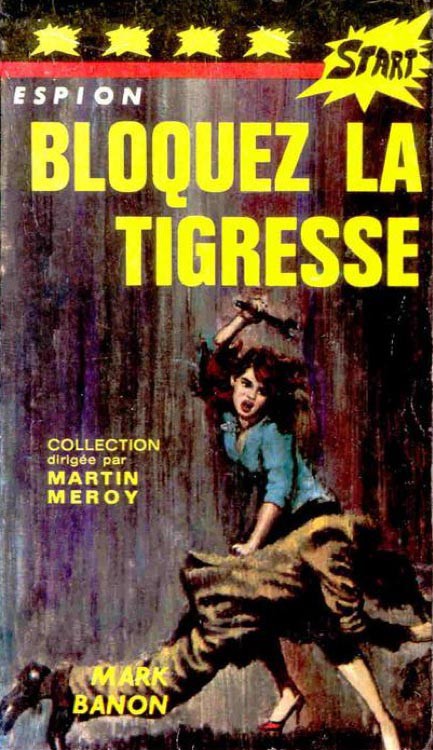 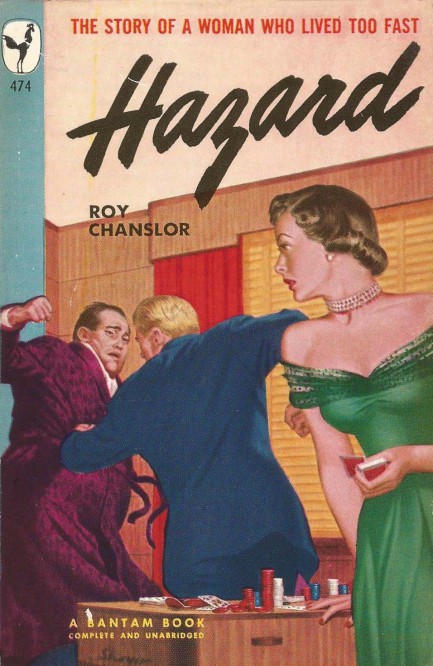 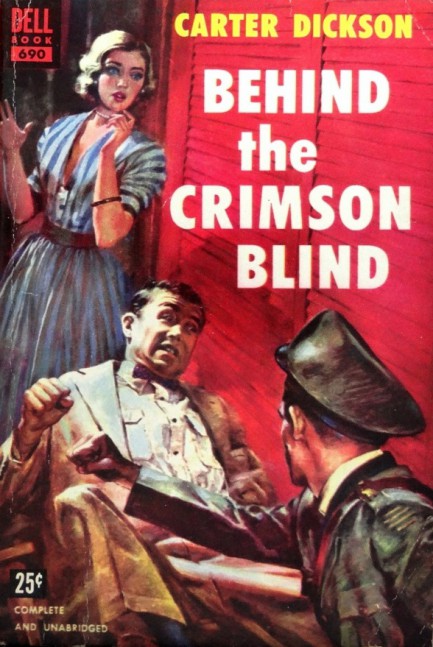 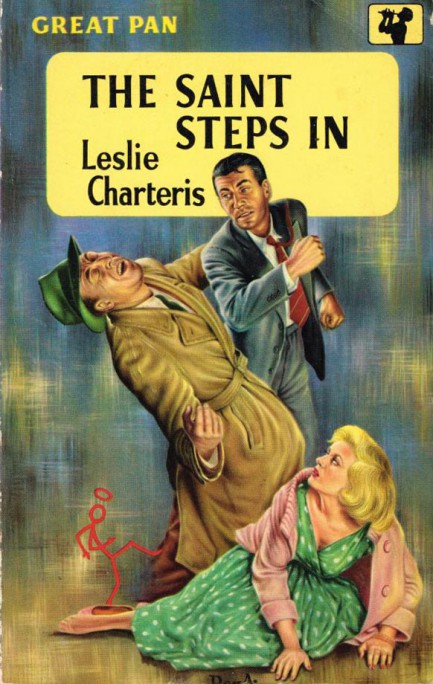 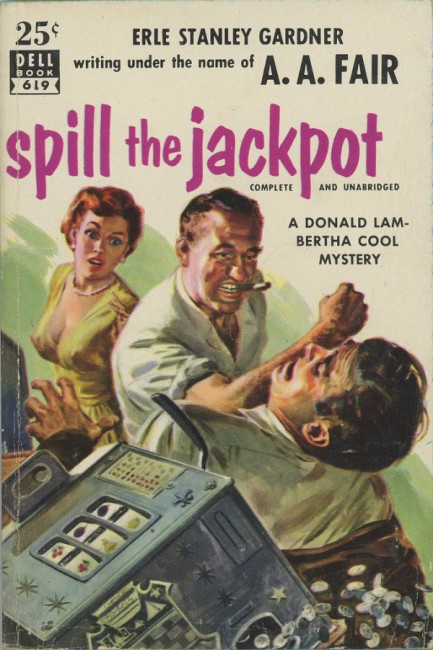 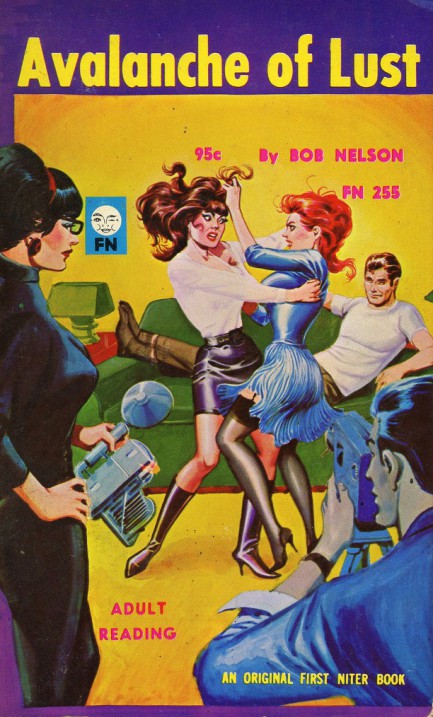 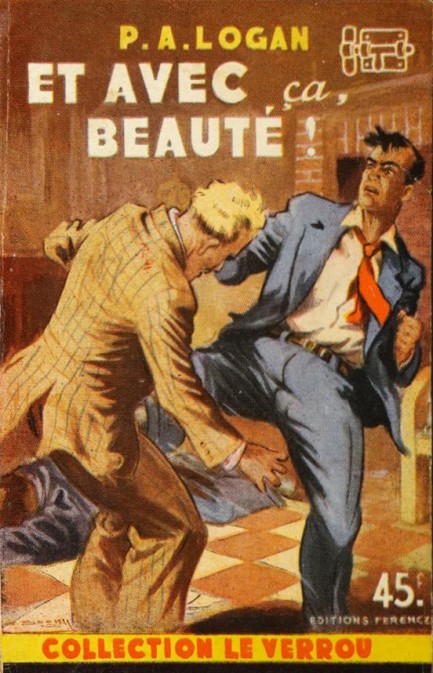 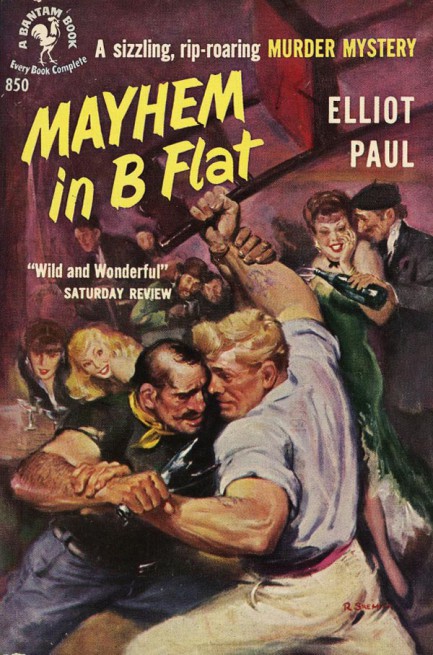
 Mid-century fiction’s love affair with the East produced scores of virtuoso bookcovers. 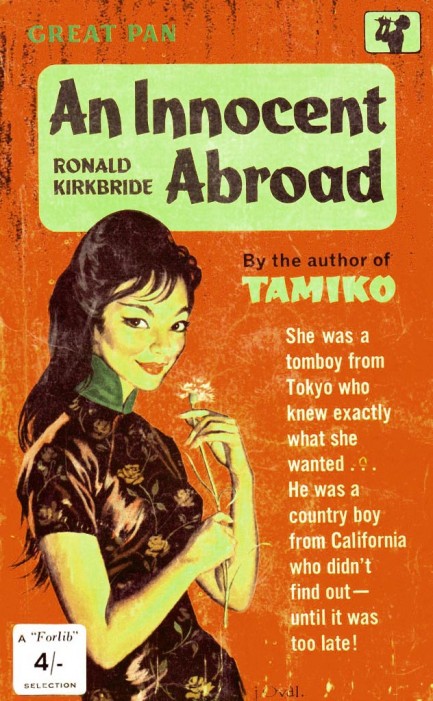
It seems time for another themed cover collection, so today we’re sharing some of the scores of Asian styled mid-century paperback fronts we’ve seen. Much of the fiction here is offensive on some level, but then quite a bit of the old literature falls into that category. The art, on the other hand, is somewhat easier to look at dispassionately. So we have thirty-two paperback covers revealing the mid-century fascination with—or exploitation of—Asian archetypes, with art by Denis McLoughlin, Robert Maguire (identically on Ne-San and The Transistor Girls), J. Oval, aka Ben Ostrick, and more. Four or five of these came from Flickr, so thanks to the original uploaders on those. 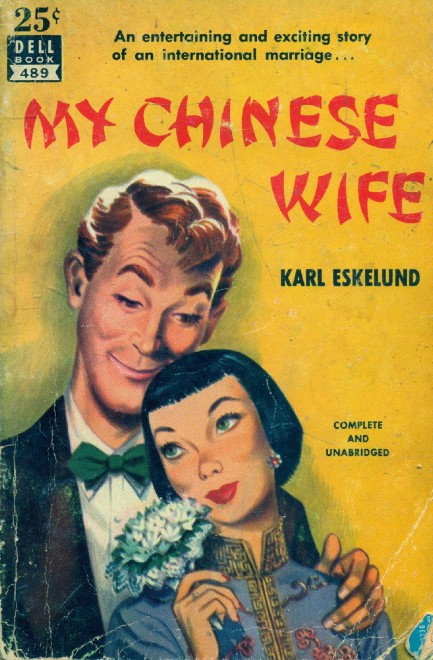  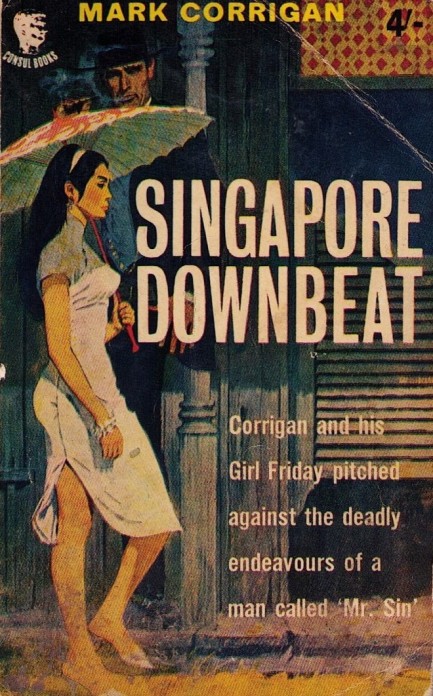 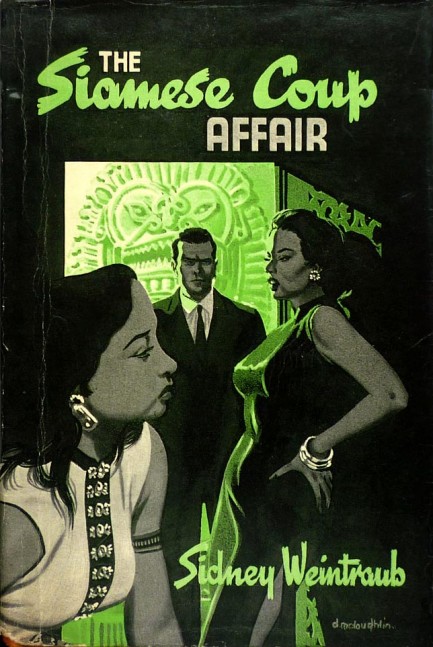  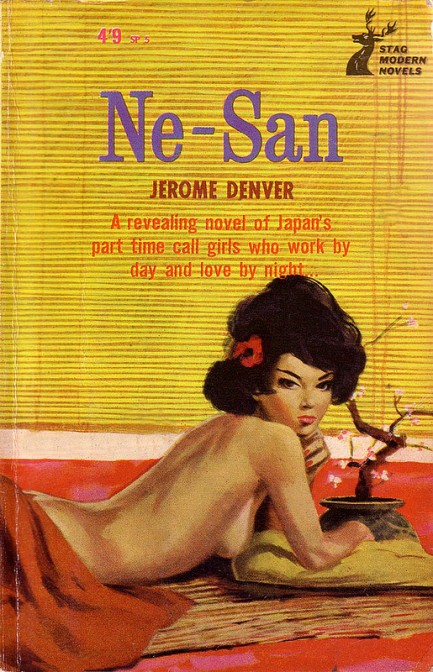 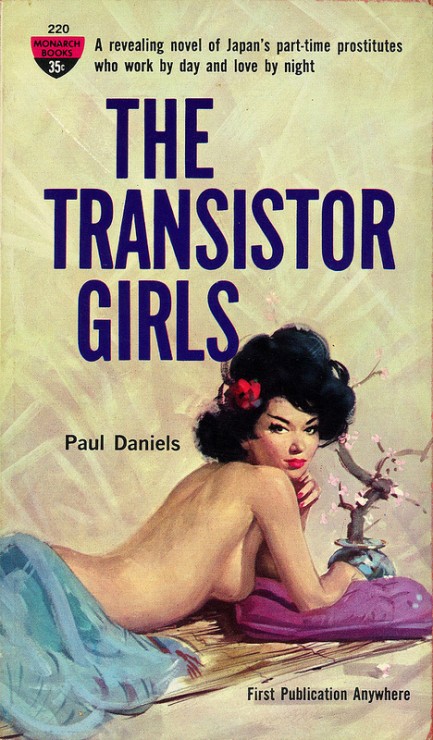 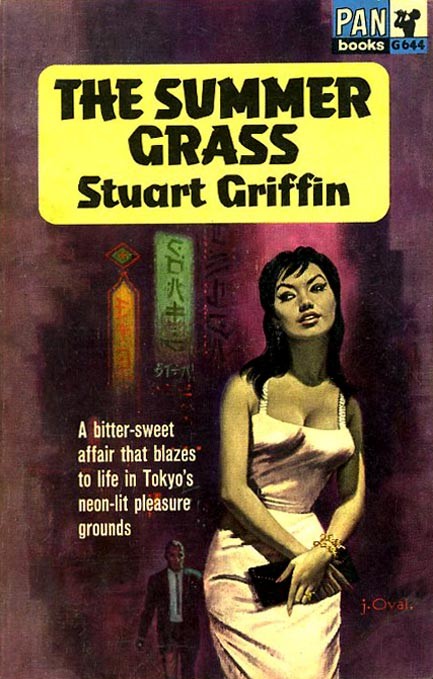 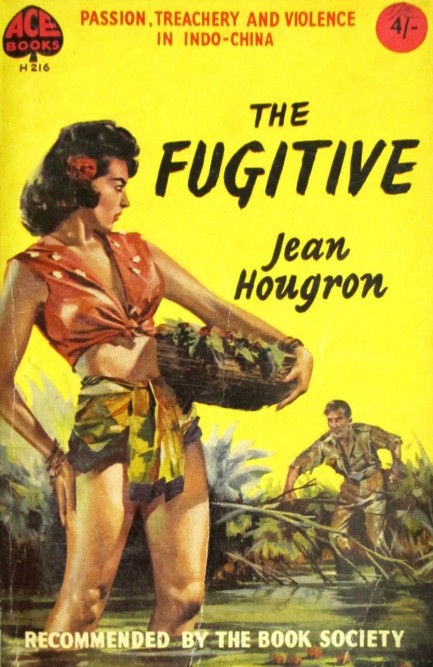 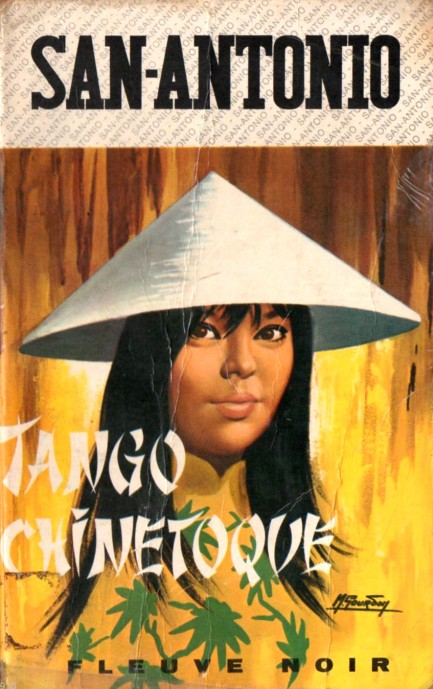  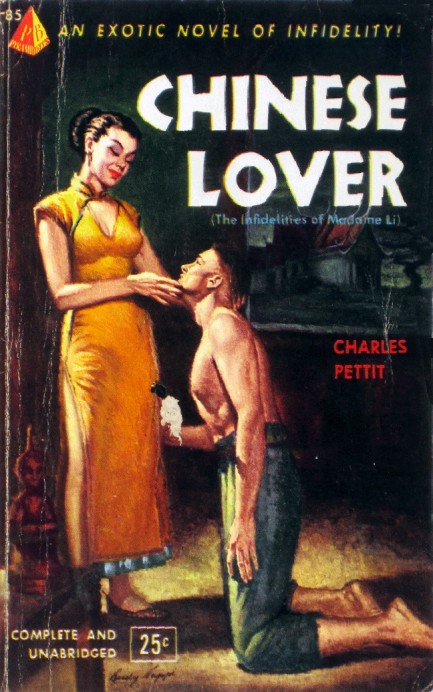 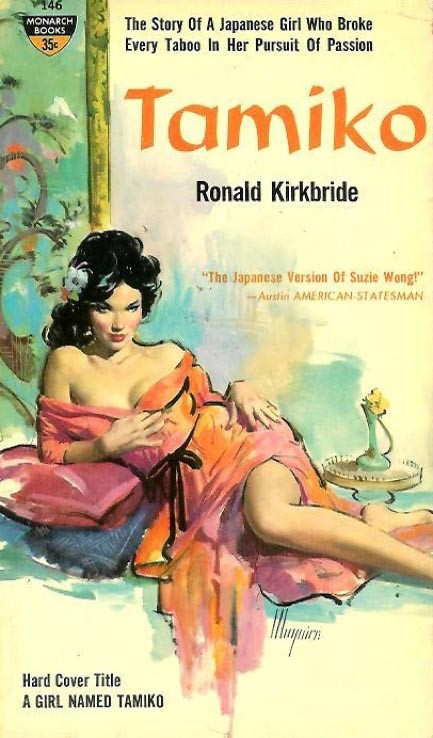  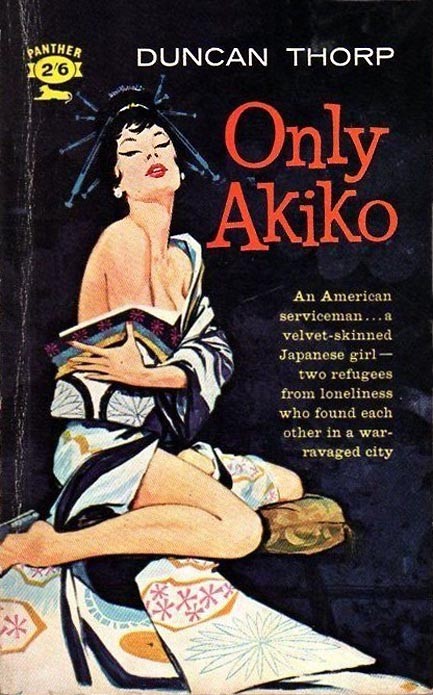 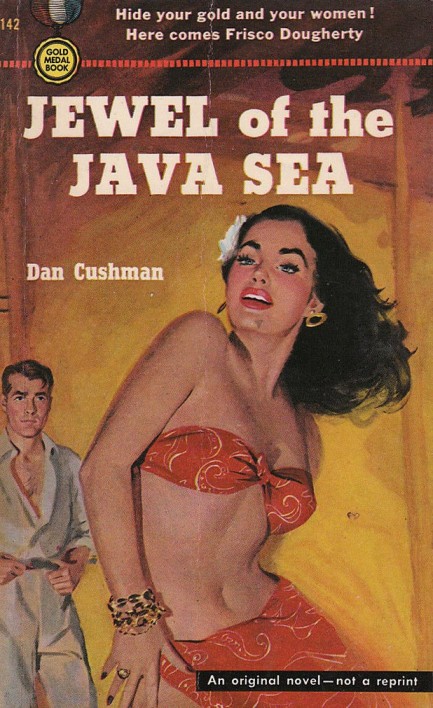  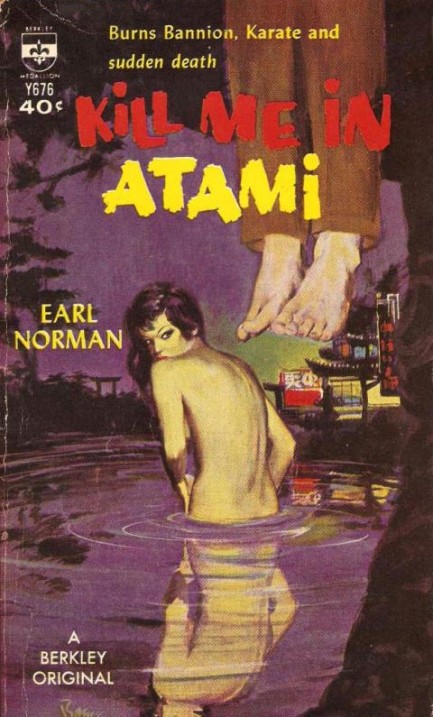   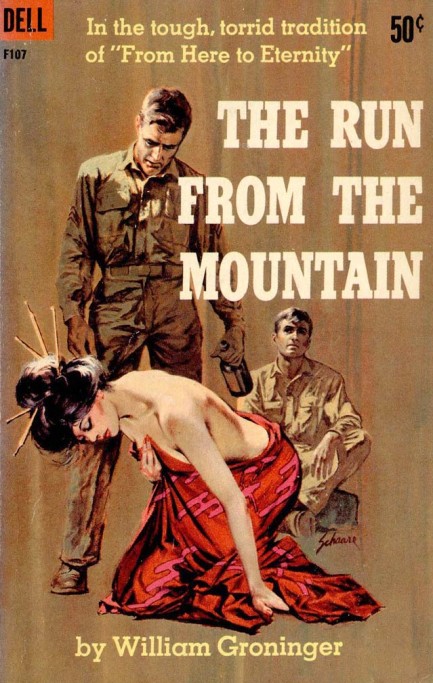 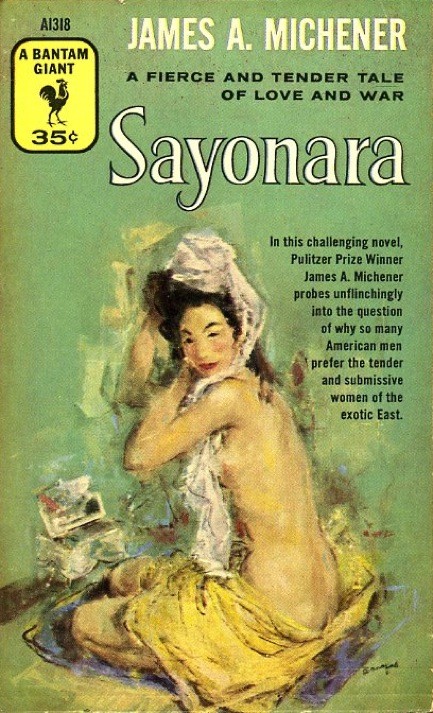 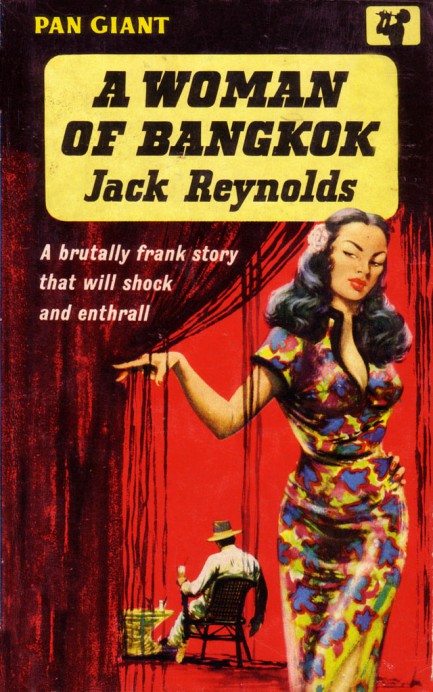 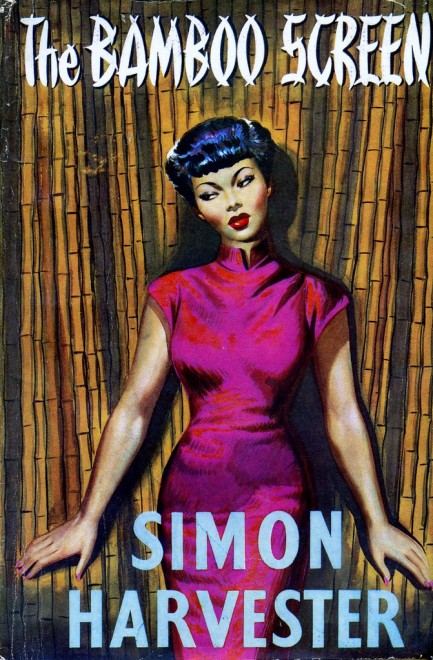 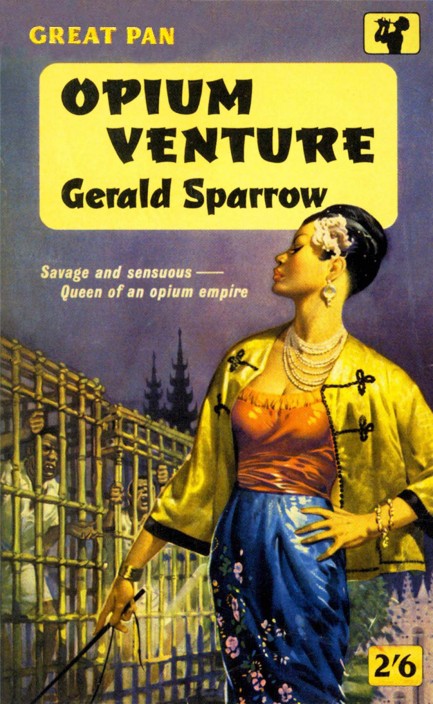 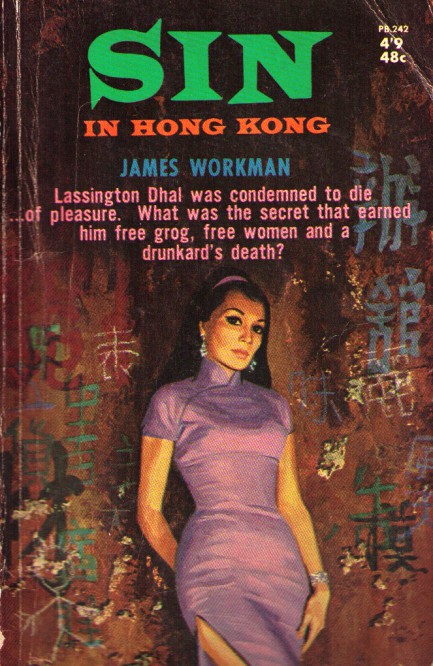 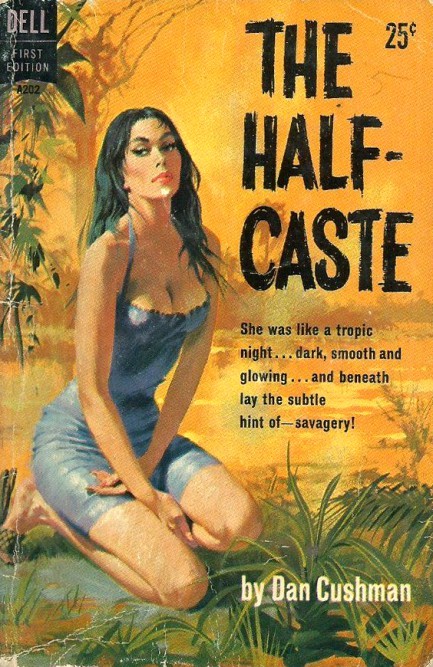 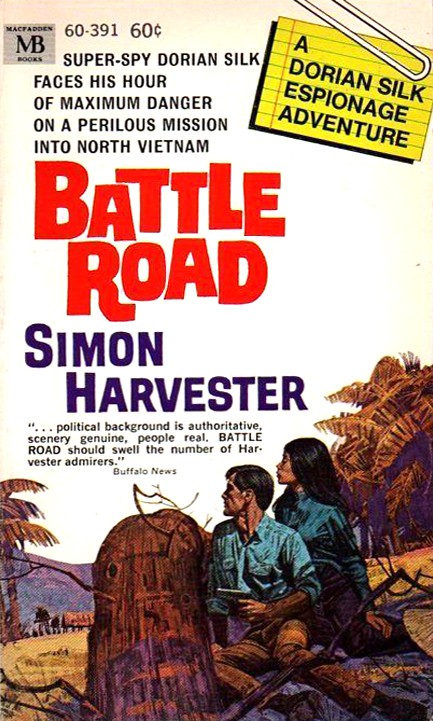 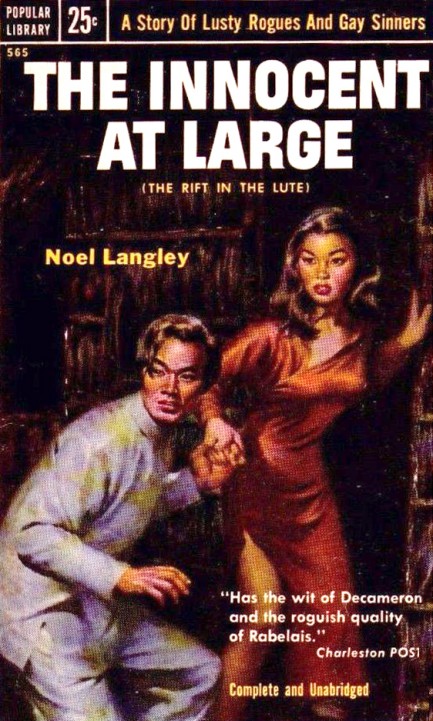 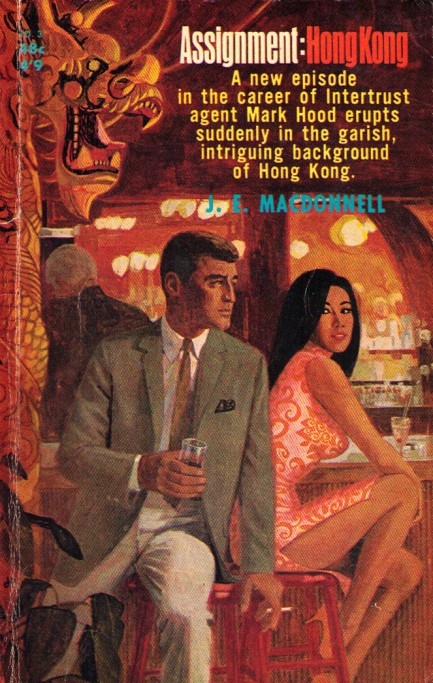 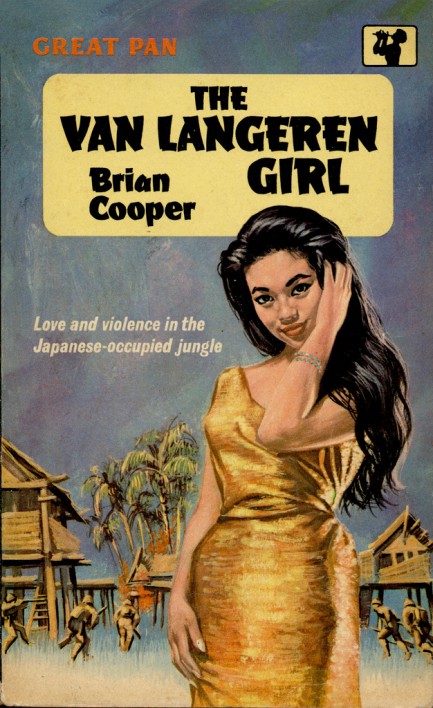 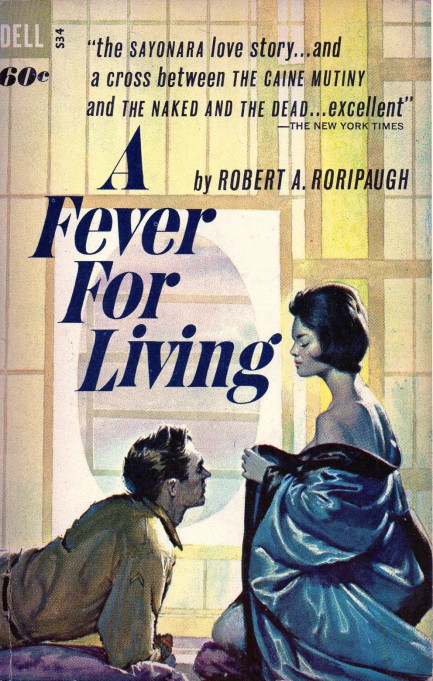
|
 |

The headlines that mattered yesteryear.
2003—Hope Dies
Film legend Bob Hope dies of pneumonia two months after celebrating his 100th birthday. 1945—Churchill Given the Sack
In spite of admiring Winston Churchill as a great wartime leader, Britons elect
Clement Attlee the nation's new prime minister in a sweeping victory for the Labour Party over the Conservatives. 1952—Evita Peron Dies
Eva Duarte de Peron, aka Evita, wife of the president of the Argentine Republic, dies from cancer at age 33. Evita had brought the working classes into a position of political power never witnessed before, but was hated by the nation's powerful military class. She is lain to rest in Milan, Italy in a secret grave under a nun's name, but is eventually returned to Argentina for reburial beside her husband in 1974. 1943—Mussolini Calls It Quits
Italian dictator Benito Mussolini steps down as head of the armed forces and the government. It soon becomes clear that Il Duce did not relinquish power voluntarily, but was forced to resign after former Fascist colleagues turned against him. He is later installed by Germany as leader of the Italian Social Republic in the north of the country, but is killed by partisans in 1945.
|

|
|

It's easy. We have an uploader that makes it a snap. Use it to submit your art, text, header, and subhead. Your post can be funny, serious, or anything in between, as long as it's vintage pulp. You'll get a byline and experience the fleeting pride of free authorship. We'll edit your post for typos, but the rest is up to you. Click here to give us your best shot.

|
|
























































































































































